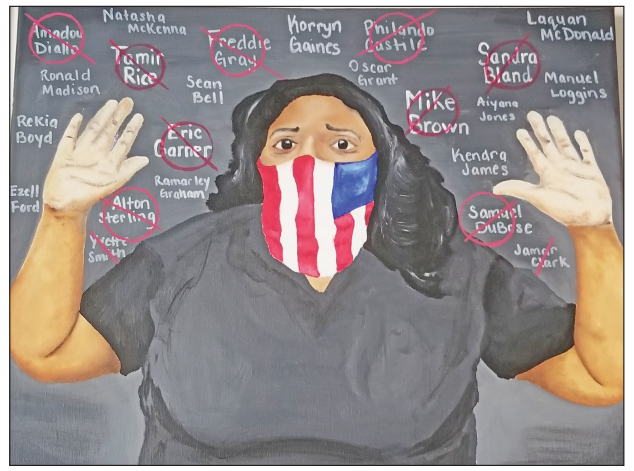Inner City Youth and Survivornomics (TM)

The following is an excerpt from the article written by Dr. Lorece V. Edwards of Morgan State University School of Community Health & Policy that was published by the Baltimore Times on April 5, 2019. *NOTE: “Hands Up” artwork above is by Asia Ross (Morgan State University Graduate Student).
African American youth have historically been disproportionately affected by an array of environmental stressors (exposure to violence, living and playing in high-risk scapes, and adverse childhood experiences) that have put them at higher risk for poor adjustment outcomes (Adams III et al., 2003). Despite their hardships, not all of these youth fall victim to negative and stressful environmental and community level influences (Miller & MacIntosh, 1999). In spite of the many social, environmental and political factors that shape health and influences outcomes. The importance of resilience cannot be overlooked. We must remain vigilant in exploring the processes through which resilience is achieved giving full consideration to the world in which they live. There is a T’Challa and Killmonger in every youth.
Extensive research has conclusively demonstrated that children’s social class is one of the most significant predictors— if not the single most significant predictor— of their educational success. Moreover, it is increasingly apparent that performance gaps by social class take root in the earliest years of children’s lives and fails to narrow in the years that follow (Elias, 2013). That is, children who start behind stay behind — they are rarely able to make up the lost ground. This trajectory supports as well as stamps the school to prison pipeline. The school-to-prison pipeline is a process through which students are pushed out of schools and into prisons (Elias, 2013). In other words, it is a process of criminalizing youth that is carried out by disciplinary policies and practices within schools that put students into contact with law enforcement.
Instead of pushing students out of school, we need to “rethink schools” and make them responsive to the contemporary needs of our children and young adults. There needs to be teacher trainings, appropriate resources, perceivedrisk assessment, and the development of culturally appropriate and compatible trauma-informed curriculum. Furthermore, we must give full consideration to the communities that our kids come from. Schools need to be a safe place where children feel they belong and want to attend. No Child left behind and No Child found on a MurderInk search. According to Dr. Berttina Love (2019), our educational system is maintained by the profits from the suffering of children of color. She suggest that, instead of trying to repair a flawed system, educational reformers offer survival tactics in the forms of testtaking skills, acronyms, grit labs and character education, which Love eloquently calls the educational survival complex. The educational survival complex is a system in which children are left learning how to survive (Love, 2019).




